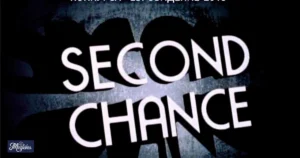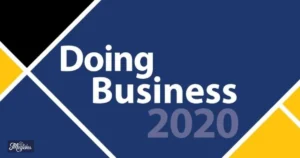Language is a powerful tool, and when it comes to driving, metaphors involving cars are often used to convey deeper meanings in our everyday conversations. These metaphors can make communication more vivid and relatable, helping us express ideas that might be otherwise difficult to explain.
Whether we’re talking about navigating challenges, speeding towards success, or hitting the brakes on a project, car metaphors bring energy and clarity to our words.
In this post, we’ll explore 35 different car metaphors and how they’re used in conversation, along with examples and explanations to help you understand them better.
1. “In the Driver’s Seat”
Meaning: Being “in the driver’s seat” means being in control of a situation.
Example 1: “With the new promotion, Maria is in the driver’s seat of her career.”
Example 2: “When it comes to family decisions, John likes to be in the driver’s seat.”
Explanation: This metaphor suggests that the person has control, just like a driver has control over the car. It implies authority and responsibility in managing a situation.
2. “Running on Empty”
Meaning: “Running on empty” means continuing to work or function with very little energy or resources left.
Example 1: “After weeks of overtime, I’m really running on empty.”
Example 2: “The team has been running on empty trying to meet the project deadline.”
Explanation: This phrase compares a person’s low energy to a car running out of fuel, emphasizing the need for rest or replenishment.
3. “Put the Pedal to the Metal”
Meaning: To “put the pedal to the metal” means to go all out or speed up in pursuit of a goal.
Example 1: “With only a week left, it’s time to put the pedal to the metal.”
Example 2: “The company put the pedal to the metal to launch the new product ahead of the competition.”
Explanation: This metaphor suggests accelerating efforts or increasing speed to achieve something, much like pressing the gas pedal to accelerate a car.
4. “Shift Gears”
Meaning: “Shift gears” means to change the way you’re approaching a situation or to make a significant change.
Example 1: “The company decided to shift gears and focus on digital marketing.”
Example 2: “After a year in sales, she shifted gears and moved into a management role.”
Explanation: Just as shifting gears in a car changes its speed and power, this metaphor implies making a strategic change in one’s approach or focus.
5. “Back on Track”
Meaning: To be “back on track” means to return to the correct path or course of action after a deviation.
Example 1: “After some initial delays, the project is back on track.”
Example 2: “I missed a few workouts, but now I’m back on track with my fitness goals.”
Explanation: This phrase suggests returning to a planned or desired state, similar to a car getting back onto the road after going off course.
6. “Hit the Brakes”

Meaning: To “hit the brakes” means to slow down or stop an activity or process.
Example 1: “We need to hit the brakes on this project until we get more funding.”
Example 2: “She hit the brakes on her career to focus on her family.”
Explanation: This metaphor refers to the action of slowing or stopping a vehicle, implying the need to pause or slow down in other contexts.
7. “Take the Wheel”
Meaning: To “take the wheel” means to assume control or responsibility for something.
Example 1: “When the manager left, Sarah had to take the wheel and lead the team.”
Example 2: “It’s time for you to take the wheel of your own career.”
Explanation: This metaphor compares taking control of a situation to taking the steering wheel of a car, indicating leadership or personal responsibility.
8. “On Cruise Control”
Meaning: To be “on cruise control” means to proceed with minimal effort or to maintain a steady course.
Example 1: “Once the project was set up, the team was on cruise control for the rest of the quarter.”
Example 2: “He’s on cruise control in his job now that he has mastered the routine tasks.”
Explanation: Just as a car on cruise control moves steadily without constant input, this metaphor describes a situation where little adjustment is needed.
9. “Burning Rubber”
Meaning: “Burning rubber” refers to driving very fast or making an impressive start.
Example 1: “The startup company is burning rubber with its new product launch.”
Example 2: “He burned rubber on the track, setting a new record.”
Explanation: This metaphor compares the noise and heat of tires spinning rapidly to making an energetic or fast-paced start in various endeavors.
10. “Under the Hood”
Meaning: “Under the hood” means to look into the details or inner workings of something.
Example 1: “Let’s look under the hood of this new software to see how it works.”
Example 2: “Understanding what’s under the hood of your car can help with maintenance.”
Explanation: This metaphor draws on inspecting the engine of a car to imply examining the inner details or workings of something.
Nature’s Poetry: Captivating Metaphors for Nature
11. “Out of Gas”
Meaning: To be “out of gas” means to be exhausted or to have run out of resources.
Example 1: “I’m out of gas after the long meeting; I need a break.”
Example 2: “The team is out of gas and needs some time off before starting the next phase.”
Explanation: Similar to a car running out of fuel, this phrase indicates a lack of energy or resources.
12. “In the Fast Lane”
Meaning: To be “in the fast lane” means to live or work in a high-speed, high-energy environment.
Example 1: “He’s used to working in the fast lane in his high-pressure job.”
Example 2: “Living in the fast lane can be exciting but also stressful.”
Explanation: This metaphor compares an energetic lifestyle to driving in the fast lane of a highway, emphasizing speed and intensity.
13. “Change Lanes”
Meaning: To “change lanes” means to switch strategies or approaches.
Example 1: “The business had to change lanes to adapt to market changes.”
Example 2: “After realizing the old methods weren’t working, she decided to change lanes in her career.”
Explanation: This metaphor refers to moving from one lane to another while driving, symbolizing a shift in strategy or direction.
14. “Rev Up”
Meaning: To “rev up” means to increase activity or excitement.
Example 1: “The team needs to rev up their efforts to meet the upcoming deadline.”
Example 2: “The crowd began to rev up as the concert time approached.”
Explanation: This metaphor compares increasing excitement or activity to revving the engine of a car to build speed.
15. “On the Road”
Meaning: To be “on the road” means to be traveling or progressing towards a goal.
Example 1: “After the initial setbacks, the project is now on the road to success.”
Example 2: “She’s on the road to becoming a top executive with her current efforts.”
Explanation: This metaphor likens the journey towards a goal to being on a physical road, indicating progress and movement.
16. “Roadblock”
Meaning: A “roadblock” refers to an obstacle or challenge that prevents progress.
Example 1: “The new regulations are a roadblock to completing the project.”
Example 2: “They encountered a roadblock in their negotiations, which delayed the deal.”
Explanation: This metaphor compares obstacles to physical barriers on a road, highlighting issues that impede progress.
17. “Cruise to Success”
Meaning: To “cruise to success” means to achieve success with ease and minimal effort.
Example 1: “With her expertise, she cruised to success in the competition.”
Example 2: “The project manager cruised to success thanks to the team’s hard work.”
Explanation: This metaphor compares achieving success smoothly to cruising on a highway, implying effortless progress.
18. “Drive Home”
Meaning: To “drive home” means to emphasize or make something clear.
Example 1: “The speaker drove home the importance of teamwork during the seminar.”
Example 2: “She drove home the main points of her presentation to ensure everyone understood.”
Explanation: This metaphor likens making a point clear to driving a car home, emphasizing the importance of clear communication.
19. “In the Rearview Mirror”
Meaning: To be “in the rearview mirror” means to leave something behind or to be past a particular phase.
Example 1: “With the new project underway, the old issues are now in the rearview mirror.”
Example 2: “She left her previous job in the rearview mirror and focused on her new role.”
Explanation: This metaphor refers to seeing things behind you in a rearview mirror, indicating that something is no longer a concern or part of the present.
20. “On the Right Track”
Meaning: To be “on the right track” means to be following a correct or successful path.
Example 1: “The team is on the right track with the new marketing strategy.”
Example 2: “Her research is on the right track, and the results look promising.”
Explanation: This metaphor compares following a successful course to staying on the right lane of a road, suggesting progress and correct direction.
21. “Steer Clear”
Meaning: To “steer clear” means to avoid or stay away from something.
Example 1: “We should steer clear of that outdated software.”
Example 2: “He advised them to steer clear of risky investments.”
Explanation: This metaphor refers to maneuvering a vehicle away from obstacles, suggesting avoiding potential problems or risks.
22. “Drive the Point Home”
Meaning: To “drive the point home” means to make a point very clear or convincing.
Example 1: “The manager drove the point home about meeting deadlines.”
Example 2: “The teacher drove the point home with several examples.”
Explanation: This metaphor likens emphasizing a point to driving a vehicle firmly, suggesting strong communication and clarity.
23. “Hit the Gas”
Meaning: To “hit the gas” means to accelerate or increase effort rapidly.
Example 1: “We need to hit the gas to complete this project on time.”
Example 2: “She hit the gas on her campaign efforts to gain more visibility.”
Explanation: This metaphor compares increasing effort or speed to pressing the gas pedal in a car, implying urgency and acceleration.
24. “Change the Tune”
Meaning: To “change the tune” means to alter one’s attitude or approach.
Example 1: “After the feedback, he had to change the tune of his presentation.”
Example 2: “The company changed its tune after realizing the market needs.”
Explanation: This metaphor compares altering an approach to changing the music being played, indicating a shift in strategy or perspective.
25. “Speed Bump”
Meaning: A “speed bump” refers to a minor obstacle or delay.
Example 1: “The delay in delivery was just a speed bump in our project timeline.”
Example 2: “She encountered a speed bump with the new regulations but managed to overcome it.”
Explanation: This metaphor compares small delays or problems to speed bumps on a road, suggesting they are minor issues to be addressed.
26. “Revitalize the Engine”
Meaning: To “revitalize the engine” means to rejuvenate or refresh something.
Example 1: “The company’s new strategy is designed to revitalize the engine of its growth.”
Example 2: “The team’s new training program aims to revitalize the engine of productivity.”
Explanation: This metaphor likens refreshing or improving something to revitalizing a car engine, suggesting renewal and increased effectiveness.
27. “Drive Away”
Meaning: To “drive away” means to escape or distance oneself from a situation.
Example 1: “He drove away from the stressful situation by taking a vacation.”
Example 2: “The new policy allowed employees to drive away from excessive workloads.”
Explanation: This metaphor compares removing oneself from a problem to driving a car away, implying distance and escape.
28. “Accelerate the Process”
Meaning: To “accelerate the process” means to speed up the completion of something.
Example 1: “We need to accelerate the process to meet the deadline.”
Example 2: “Her efforts helped accelerate the process of development.”
Explanation: This metaphor compares speeding up a process to accelerating a vehicle, implying increased pace and efficiency.
29. “Take a Detour”
Meaning: To “take a detour” means to follow an alternative path or approach.
Example 1: “The project took a detour when new challenges arose.”
Example 2: “She decided to take a detour in her career to explore new opportunities.”
Explanation: This metaphor refers to changing one’s course, similar to taking an alternative route while driving, indicating a change in direction.
30. “Road to Recovery”
Meaning: The “road to recovery” means the process of returning to a better state or condition.
Example 1: “After the setback, the team is on the road to recovery.”
Example 2: “His health improvements are a sign he’s on the road to recovery.”
Explanation: This metaphor compares the process of improvement to traveling along a road, suggesting progress and a return to normalcy.
31. “Full Throttle”
Meaning: To go “full throttle” means to give maximum effort or speed.
Example 1: “The team went full throttle to complete the project ahead of schedule.”
Example 2: “She’s operating at full throttle to achieve her personal goals.”
Explanation: This metaphor compares exerting maximum effort to setting a car’s throttle to its highest setting, indicating full intensity and commitment.
32. “On a Smooth Ride”

Meaning: To be “on a smooth ride” means experiencing an easy and trouble-free process.
Example 1: “The project is going on a smooth ride now that all the issues are resolved.”
Example 2: “His transition to the new role has been on a smooth ride.”
Explanation: This metaphor likens an easy process to a smooth and pleasant car ride, emphasizing ease and lack of complications.
33. “In the Fast Lane”
Meaning: To be “in the fast lane” means to be involved in a high-energy or high-speed situation.
Example 1: “She’s been in the fast lane with her demanding new job.”
Example 2: “The startup’s growth has put them in the fast lane of the tech industry.”
Explanation: This metaphor refers to operating at high speed or energy, similar to driving in the fast lane of a highway.
34. “Buckle Up”
Meaning: To “buckle up” means to prepare for something challenging or exciting.
Example 1: “Buckle up for an intense meeting this afternoon.”
Example 2: “She told her team to buckle up for the upcoming project deadlines.”
Explanation: This metaphor compares preparing for a challenge to buckling a seatbelt, suggesting readiness and anticipation.
35. “Downshift”
Meaning: To “downshift” means to reduce intensity or speed.
Example 1: “After the busy season, it’s time to downshift and relax.”
Example 2: “The company decided to downshift their expansion plans to focus on core markets.”
Explanation: This metaphor refers to changing gears in a car to reduce speed, symbolizing a decrease in pace or intensity.
Answer To Key Question
1. What are car metaphors used for in conversations?
Car metaphors help convey complex ideas and emotions by relating them to driving experiences, making communication more vivid and relatable.
2. How can I use car metaphors effectively in writing?
Use car metaphors to illustrate concepts clearly and creatively, ensuring they fit the context of your message and resonate with your audience.
3. Are there any common car metaphors in everyday speech?
Yes, phrases like “in the driver’s seat,” “hit the brakes,” and “running on empty” are common car metaphors used to express control, slowing down, or exhaustion.
4. Can car metaphors enhance storytelling?
Absolutely! Car metaphors can make stories more engaging by adding dynamic elements and relatable imagery to describe characters’ journeys or challenges.
5. How do I avoid overusing car metaphors?
Balance car metaphors with other types of imagery and be mindful of context. Overuse can dilute their impact and make communication seem repetitive.
6. Where can I find more examples of car metaphors?
Explore literature, movies, and everyday conversations where driving and cars are used metaphorically. They often provide rich examples of how these metaphors are applied.
Conclusion
Car metaphors offer a dynamic way to enrich our conversations and writings, drawing on the familiar experience of driving to make abstract ideas more tangible.
By understanding and using these metaphors effectively, you can enhance communication and convey your messages with greater clarity and impact. Embrace these driving metaphors to steer your conversations in engaging and insightful directions.
Hi, I’m Robert James, the Admin of the “Minglishs” website. I oversee daily operations, ensuring everything runs smoothly and efficiently for an optimal user experience.










